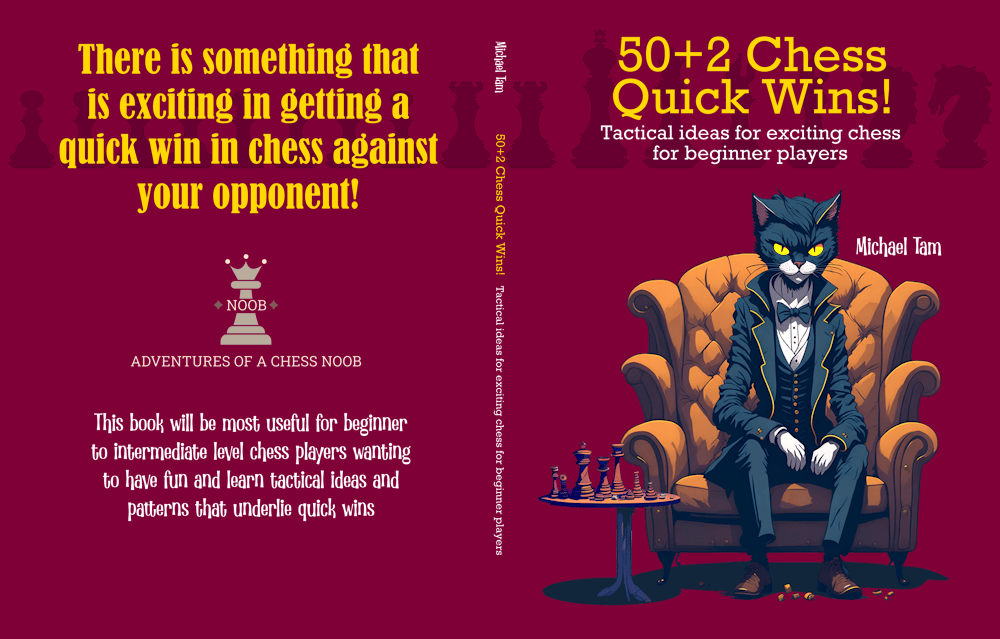
Vienna Game | A MESSY BRILLIANT Game!
#viennagambit #maxlange #brilliant
This was a game I played very recently that was a lot of fun and had some points of learning. I played this game at night - probably at around 9 PM - so was a bit tired. One of the chess.com "Insights" from 2023 was that my performance is noticeably worse at night, compared to during the day! So, this game isn't the most accurate - it's a bit messy - but I did find a brilliancy that I'm proud of!
I had the White pieces, and against Black the game starts with the Max Lange Vienna Gambit (1. e4 e5 2. Nc3 Nc6 3. f4). Black responded with (3... d6), a passive and slightly suboptimal move (accepting the gambit is best), but it caught me a little off guard as I wasn't expecting it. Without thinking it through, I played (4. Bc4) and realised almost right away that I should have played (4. Nf3) first!
Separate to Stockfish's evaluation on accuracy, the issue is that after (4... Nf6), the only rational move is (5. d3) and we have transposed into the Berlin-Vienna Hybrid variation. There's nothing wrong with this position whatsoever, and I used to frequently enter it with the Max Lange Defense of the Vienna Game. However, the reason I now play f4, the Vienna Gambit against the Max Lange Defense is to try to avoid the Berlin-Vienna Hybrid as I don't tend to enjoy those games quite as much.
It was clear in the opening that Black tended to play somewhat conservatively and defensively, so on move 6, I decided to spice things up with (6. fxe5). I knew that this was probably inaccurate, but it forces opens the f-file and the centre, steering the game away from something that would otherwise tend to be closed and positional. This makes the game more Vienna Gambit-ey! The chess.com analytic engine calls this an inaccuracy [+0.3 → -0.1] but I think it's completely fine!
By move 10, we had entered the middlegame. Both my opponent and I had castled kingside, which is often advantageous for White in Vienna Gambit lines. The strategy is simple - attack Black's king! Tactical resources that I had included that semi-open f-file controlled by my rook, the dark square c1-bishop ready to smash Black's defences with a sacrificial capture (Bxh6), my c4-bishop potentially pins Black's f7-pawn to the king, my centrally placed d5-knight ready to deflect or remove Black's defensive knight on f6, and my f3-knight ready to leap into the attack with my queen! And queen first - slide over to e1 to access the g3 and h4 squares.
I suspect that Black wasn't sure how to play this position as their strategy in the middlegame seems to involve attacking down the queenside. They play (11... b5) with an attack on my light square bishop. This is flawed as Black fundamentally doesn't have a strategic target on the queenside. Remember my dark square c1-bishop? Stockfish thinks that the time for Bxh6 is now! However, I'm not so tactically sharp at night and although I considered it, I was worried that it might end up being a blunder of both my bishops.
So, I decided to play more conservatively. First, I removed Black's king's knight defender (12. Nxf6+ Qxf6). This then gave me a good place to put my light square bishop, keeping vision on f7, though it involved a shuffle. Black continued to try to pressure down the queenside and we do a bit of a dance as I respond to that attack.
On move 17, I realised that I didn't have to respond to pressure on the queenside so went on the attack on the kingside! Firstly, (17. Nh4) - moving the knight into a more advantageous position with a discovered attack on Black's queen. The semi-open f-file is power! In moving their queen, Black accidentally hangs their knight, and I snatch a quick bit of material for free. Nice!
Feeling under pressure, Black sought to trade off my light square bishop and I obliged (19... Be6 20. Bxe6 fxe6). I now had a strong sense that I was winning in the game, and this was matched by the evaluation on analysis at over [+5]. Let's take stock of the position at move 20. After trading bishops, Black's doubled e-pawns and my pawn chain had effectively created a barrier that divided the board in two. Most of Black's pieces other than their f8-rook were largely on the wrong side of that barrier!
In this position, I did have a long-ish think and found what I consider to be the best move, (21. Nf3). Stockfish thinks that some queenside shenanigans is the most accurate and although that might be the case, as we've already decided, nothing on that side really matters! On the next move, I finally play (22. Bxh6), smashing Black's king's defences! I'm reminded here that Stockfish analyses need to be taking in context. Stockfish doesn't consider this as within the top three accurate moves and all its recommendations are incremental and slow. However, I would argue that in this position Bxh6 is not only still completely winning (the evaluation only changes from [+5.4 → +4.7]), but it is also psychologically damaging to the opponent! It makes the opponent FEEL like they are losing!
That the most accurate moves are sometimes not very exciting is demonstrated again on move 24. Stockfish again suggests a slow queenside capture (axb4), or an immediate trading down to an endgame (Nxe5). Smelling blood in the game, I instead infiltrated with my queen and with the position very difficult to play, Black responds inaccurately, and I find a beautiful series of knights moves - one excellent followed by a brilliancy - (25. Qh5 Kh7? 26. Ng5+! Kg7?? 27. Nxe6+!!).
Royal fork! Black is forced to capture my knight with rook if they don't want to lose their queen, but this allows for my queen to infiltrate into the position, capture the rook and effectively create a mating net around their exposed king (27... Rxe6 28. Qf7+ Kh8 29. Qxe6).
In the game, I thought that a mating sequence probably existed (there was a [+M5]), but as I was tired, rather than trying to calculate it out, I decided to play some "safe and easy" moves and moved into an endgame. This wasn't at all accurate - quite messy in fact - but it got the job done! I forced Black to trade their queen for my rook with a skewer. And then, kept my rook on the back rank to guard against back rank mate, and pushed pawns to promote - forcing Black to trade their final couple pieces. Black was a good sport and played on, but at the point that I had two queens on the board, they sensibly resigned! GG!
The first big takeaway from this game is that I need to work on some of my endgame patterns as I could have won quite a bit earlier. The second is that engine evaluations do need to be taken in context. Often in analysis, there will be technically less accurate move that are not only still completely winning, but they will also be more strategically coherent from a psychological perspective.



